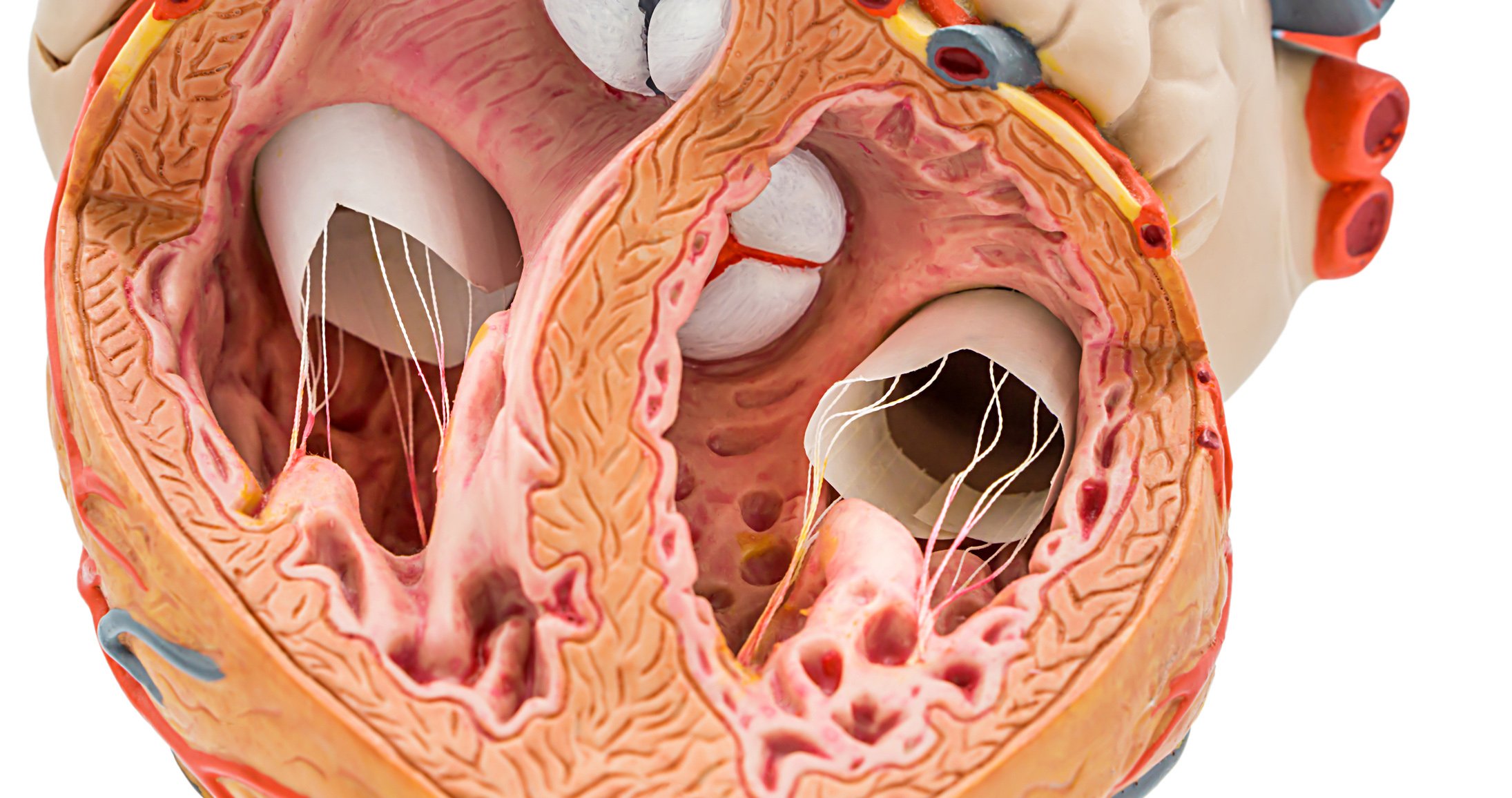Inspirations, ideas and visions for the future were the focus of this year’s DKK. About 10,000 visitors exchanged information on the interfaces of tumor medicine, rare cancers and new diagnostic and therapeutic procedures. Data on preclinical and clinical oncology were just as important as current health policy issues.
The differentiation of malignant and non-malignant cells in histopathological specimens is an important step in cancer diagnosis. Hyperspectral imaging (HSI), as recently applied to medicine, is a new technology that combines imaging with spectroscopy. HSI allows the determination of a spectrum, e.g. between visible and near infrared light, and can help to identify and classify cancer cells. After surgical resection, specimens of Barrett’s carcinoma and colorectal cancer were fixed in 4% formaldehyde, sections were prepared (3 μm) and stained with hematoxylin and eosin. Standard machine learning algorithms were applied for classification. In this way, esophageal adenocarcinoma (EAC), tumor stroma and squamous cells could be analyzed by HSI. The differences in the absorption of squamous and EAC cells were determined in the maximal absorption of eosin and hematoxylin. The within-group variations for squamous epithelium and esophageal adenocarcinoma cells were quite small. By using an MLP, an accuracy of 71% was achieved for EAC and stromal cells and 73% for squamous cells. In addition, histopathological preparations of colorectal specimens were distinguished between cancer and healthy tissue. High sensitivity and specificity of 80% and 82%, respectively, were achieved by using a recurrent neural network in combination with a convolutional neural network with a learning rate of 0.001. Colorectal cancer cells exhibit specific spectral changes based on their HE staining when measured with HSI. However, the training algorithms require further validation to support a semi-automated decision-making process in histopathological tumor cell identification [1].
Biomarker in focus
In colorectal carcinoma (CRC), mutations in the TGF-β/BMP pathway, particularly in the SMAD4 gene, have been associated with lower overall survival and are suspected to be responsible for chemoresistance. Therefore, there is an urgent need for therapeutic agents that can target SMAD4-mutated tumors. In one study, the mechanistic role of SMAD4R361H was revealed using oncoproteomics in syngeneic CRISPR-engineered SMAD4 R361H CRC patient-derived organoids (PDO). For this purpose, several PDOs from a CRC tumor were studied that differed only by the SMAD4R361H mutation. Organoid cultures were subjected to comparative drug screening, RNA sequencing, and subsequent multiplex protein profile analysis. It was shown that SMAD4R361H PDO were more sensitive to MEK inhibition compared to their SMAD4 wild-type counterparts. Of the SMAD family proteins, only SMAD5 showed changes in protein content and phosphorylation status in response to MEK inhibition. The BMP signaling pathway promotes cancer cell proliferation and tumor growth. It is plausible to assume that loss of function of SMAD4 and loss of SMAD5 signaling makes the SMAD4R361H subpopulation of cells more sensitive to MEK inhibitors. Therefore, the status of SMAD4, ARID1A, BMPR2, and FBXW7 is proposed to be used as biomarkers for MEK inhibitors to provide clinical benefit for cancer patients [2].
Breast cancer remains the most common cancer in women. In recent years, neoadjuvant chemotherapy NACT has become increasingly important as a standard therapy regimen. Due to the correlation of pathologic overall response (pCR) and clinical long-term prognosis, there is a need to monitor treatment response in terms of treatment adjustment. To date, breast ultrasound has been the method of choice for assessing progression. In a proof-of-concept, retrospective longitudinal cohort study, the goal was to find an additional method to validate treatment response by liquid biopsy. Serum samples from patients with luminal B subtype breast cancer (Her2/neu -) and TNBC were studied during NACT with 4x epirubicin and cyclophosphamide (EC)+ 12x paclitaxel. 11 responders (CR) with pCR and 11 non-responders (NR) with non-pCR, >ypT0, were included. In addition, 24 sera from healthy women were included as a control group. Samples were collected before the first cycle of EC (t0), before the third cycle of EC (t1), and before the third cycle of paclitaxel (t3). This demonstrated a significant response to NACT in the proteomic profile at time points t1 and t3 compared with time point t0. In addition, five potential marker candidates were identified that showed different intensity behavior between the NR and CR groups (HGF receptor, N-cadherin, centrosomal protein 192 kDa, contactin 1, cholinesterase). N-cadherin should be highlighted, due to its inverse behavior with an increase in intensity at t1 in CR and a decrease in intensity at t1 in NR. The present results form the basis for an extension of the study with a larger number of patients [3].
Immunotherapy for head and neck tumors
Inhibition of immunoregulatory checkpoints such as the PD-1/PD-L1 axis is one of the most important immunotherapeutic strategies for head and neck squamous cell carcinoma (HNSCC). Despite encouraging results from clinical trials, immunotherapeutic approaches often fail to control tumor disease in patients. Clinical trials are investigating the combination of immune checkpoint inhibitors (ICI) with already established therapies. But the impact of these conventional treatments on immune checkpoint regulation has been unclear. One study used irradiation (IR) alone and in combination with cisplatin or cetuximab in a 2D cell culture model of HNSCC. The IR was adapted to fractional clinical application schemes. The impact of this standard on PD-L1 expression and signaling pathways involved in resistance development were investigated by Western blot, CFA, and IHC. The results were validated in an ex vivo 3D HNSCC tissue culture model that was additionally treated with ICI to account for the therapeutic response of the tumor microenvironment, particularly immune cells. Profound induction of PD-L1 by cisplatin was observed in vitro. The combination of IR with cisplatin had an even stronger effect. Compared with single doses of IR, expression of the resistance-mediating MAP kinase phospho-ERK1/2 was upregulated after fractionated IR. The heterogeneity of PD-L1 expression and ERK phosphorylation was also reflected in the ex vivo model. The results suggest complex and likely context-dependent PD-L1 regulation when radiochemotherapy is used. Further experimental and (pre)clinical analyses are needed to decipher the underlying molecular principles [4].
Psychooncology supports those affected
Psycho-oncological care can reduce the psychological burden of cancer patients and improve quality of life. Unfortunately, even with standardized screening tools, early identification of burdened patients and treatment appropriate to the indication are often missed. One reason may be personal barriers on the part of the medical team and lack of clarity regarding the screening process. But what are the barriers oncology nurses face in conducting a psycho-oncology screening? Is there a need for training on psycho-oncology screening? Therefore, semi-structured interviews with nursing experts from oncology departments were conducted and analyzed using qualitative content analysis according to Mayring. Structural barriers such as time pressure and lack of focus on mental stress are present. Hurdles on the part of caregivers are primarily a lack of knowledge and communication uncertainties. The experts assume that there will be great interest in the training. With regard to the framework conditions, integration into working hours and the involvement of the entire care team appear to be essential. The content should be practical, include information on psychological stress, psycho-oncology, screening procedures, communication and self-care, as well as key concepts for everyday work and case studies [5].
Fear of cancer recurrence (FCR) is a common burden for cancer patients. However, it is often difficult to find outpatient psychological support. Therefore, an outpatient group was selected for the study according to the manual of Waadt et al. created that focuses on the specific needs of oncology patients with recurrence anxiety. The group program consisted of eight treatment sessions in closed small groups of 6-8 patients and two therapists. The content was standardized and included behavioral strategies (psychoeducation, cognitive exposure, coping strategies, and resources) and mindfulness. The intervention was evaluated by comparing FCR, anxiety, and depression before and after the group. 33 patients with various oncologic diagnoses participated in the group intervention. Despite limitations in implementation and recruitment of patients due to the Corona pandemic, data show positive changes with the group intervention in FCR, anxiety, and depression. The results suggest that a structured group therapy program focusing on FCR for oncology patients may be an effective and feasible intervention to improve outpatient psycho-oncology care [6].
Congress: 35th German Cancer Congress (DKK)
Literature:
- Maktabi M, Chalopin C, Wichmann Y, et al: Identification and classification of tumor cells in Barrett’s carcinoma patients by hyperspectral imaging (HSI). Poster 689. DKK 2022.
- Pfohl U, Loskutov J, Bashir S, et al: Biomarker panel predicts response to MEK inhibition in colorectal cancer. Poster 325. DKK 2022.
- Steenbuck ID, Cosenza M, Fröhlich K, et al: Serum proteins as predictive markers of the response to neoadjuvant chemotherapy for breast cancer. Poster 586. DKK 2022.
- Affolter A, Liebell K, Seiz E, et al: Impact of standard therapy on immune checkpoint regulation in 2D and 3D HNSCC models. Poster 143. DKK 2022.
- Dreismann L, Zimmermann T: Training needs and barriers of nursing staff in oncology regarding psycho-oncological screening. Poster 26. DKK 2022.
- Steinecke M, Joachims J, Kotzerke M, et al: Dealing with fear of cancer recurrence – evaluation of a psychooncological group therapy program. Poster 156. DKK 2022.












